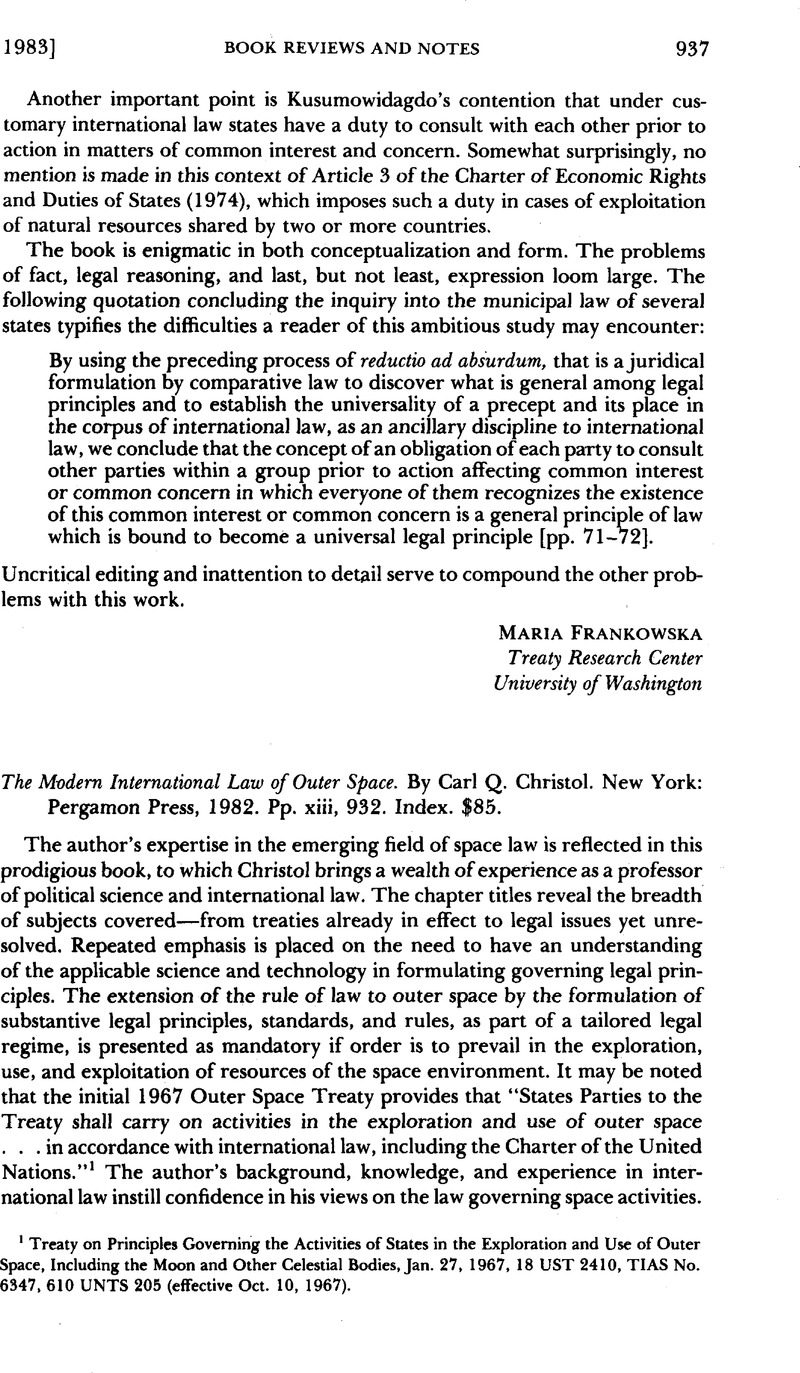No CrossRef data available.
Published online by Cambridge University Press: 27 February 2017

1 Treaty on Principles Governing the Activities of States in the Exploration and Use of Outer Space, Including the Moon and Other Celestial Bodies, Jan. 27, 1967, 18 UST 2410, TIAS No. 6347, 610 UNTS 205 (effective Oct. 10, 1967).
2 The 1967 Principles Treaty, ibid.; Agreement on the Rescue of Astronauts, the Return of Astronauts and the Return of Objects Launched into Outer Space, Apr. 22, 1968, 19 UST 7570, TIAS No. 6599, 672 UNTS 119 (effective Dec. 3, 1968); Convention on International Liability for Damage Caused by Space Objects, Mar. 29, 1972, 24 UST 2389, TIAS No. 7762, 26 UN GAOR Supp. (No. 29) at 25, UN Doc. A/8429 (1972) (effective Oct. 9, 1973); Convention on Registration of Objects Launched into Outer Space, Jan. 14, 1975, 28 UST 695, TIAS No. 8480, 29 UN GAOR Supp. (No. 31) at 16, UN Doc. A/9631 (1975) (effective Sept. 15, 1976). The texts of these treaties and the status of their ratifications are set forth in the appendixes of the book.
3 Agreement Governing the Activities of States on the Moon and Other Celestial Bodies, 34 UN GAOR Supp. (No. 20) at 33, UN Doc. A/34/20 (1979); and Annex to UNGA Res. 34/68, Dec. 14, 1979. The treaty, thus far, has been signed by 11 states (not including the United States or the USSR) and has been ratified by Chile, the Philippines, the Netherlands, and Uruguay.
4 Twenty-two thousand three hundred miles above the Earth’s equator; at this altitude the satellite’s speed in orbit is synchronous with the rotation of the Earth and thus the satellite maintains a consistent, although not fixed, hovering position over the same area of the Earth.
5 UNGA Res. 37/92, Dec. 10, 1982, reprinted in 77 AJIL 733 (1983).
6 See Art. 11, 1979 Moon Treaty, supra note 3.